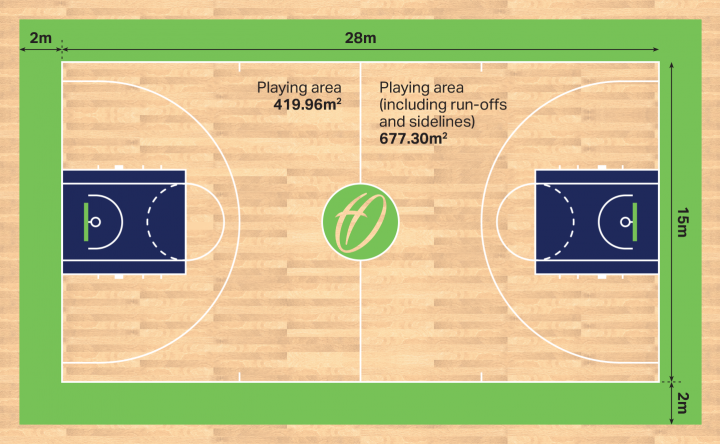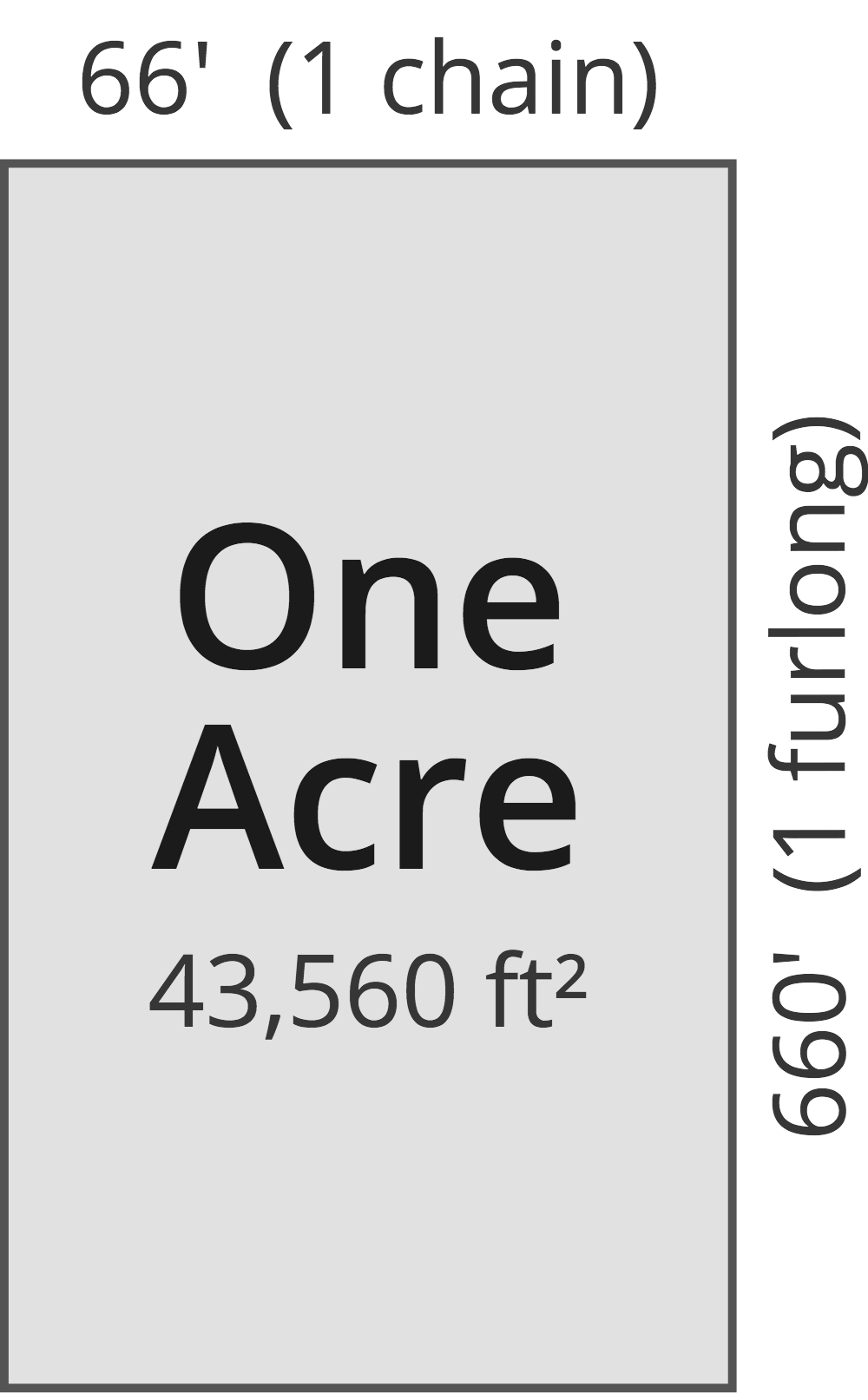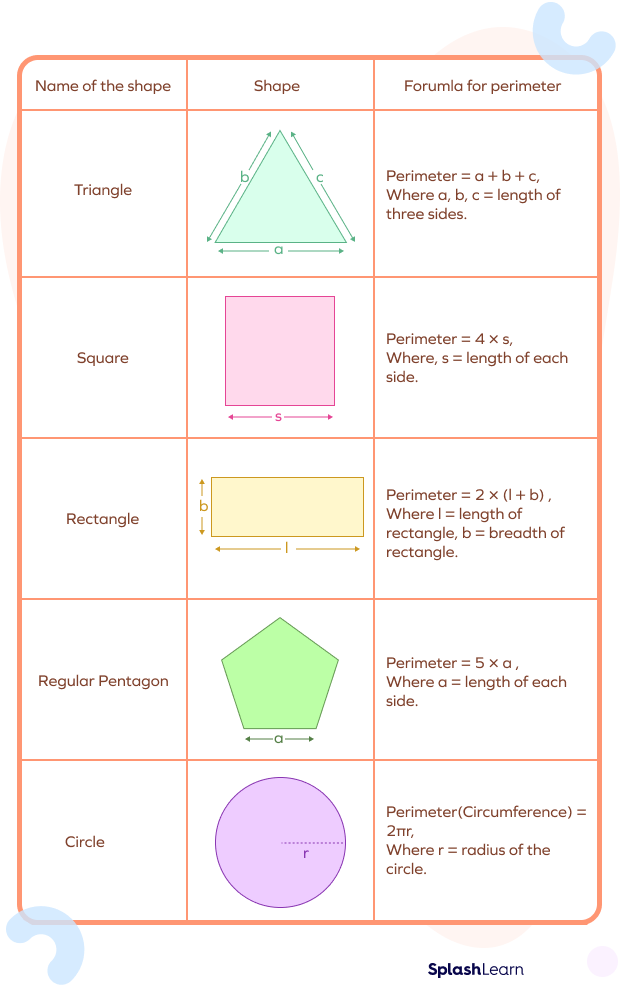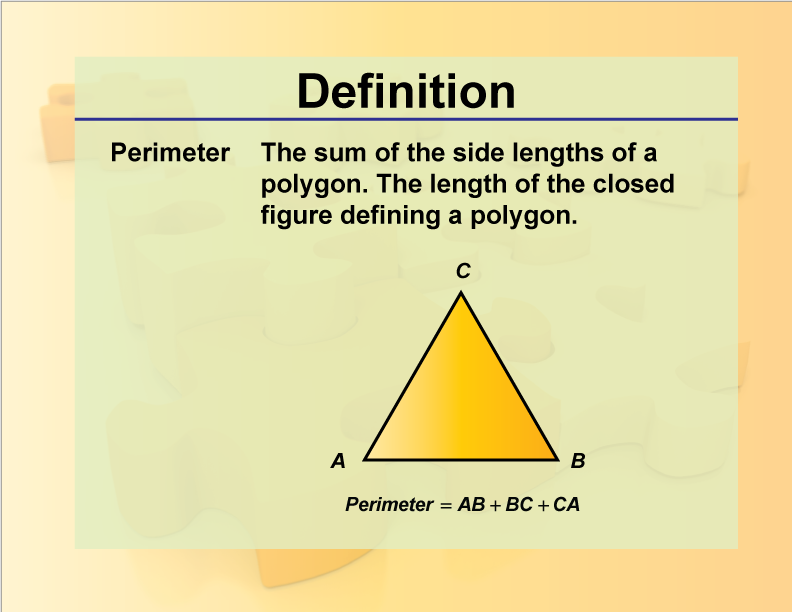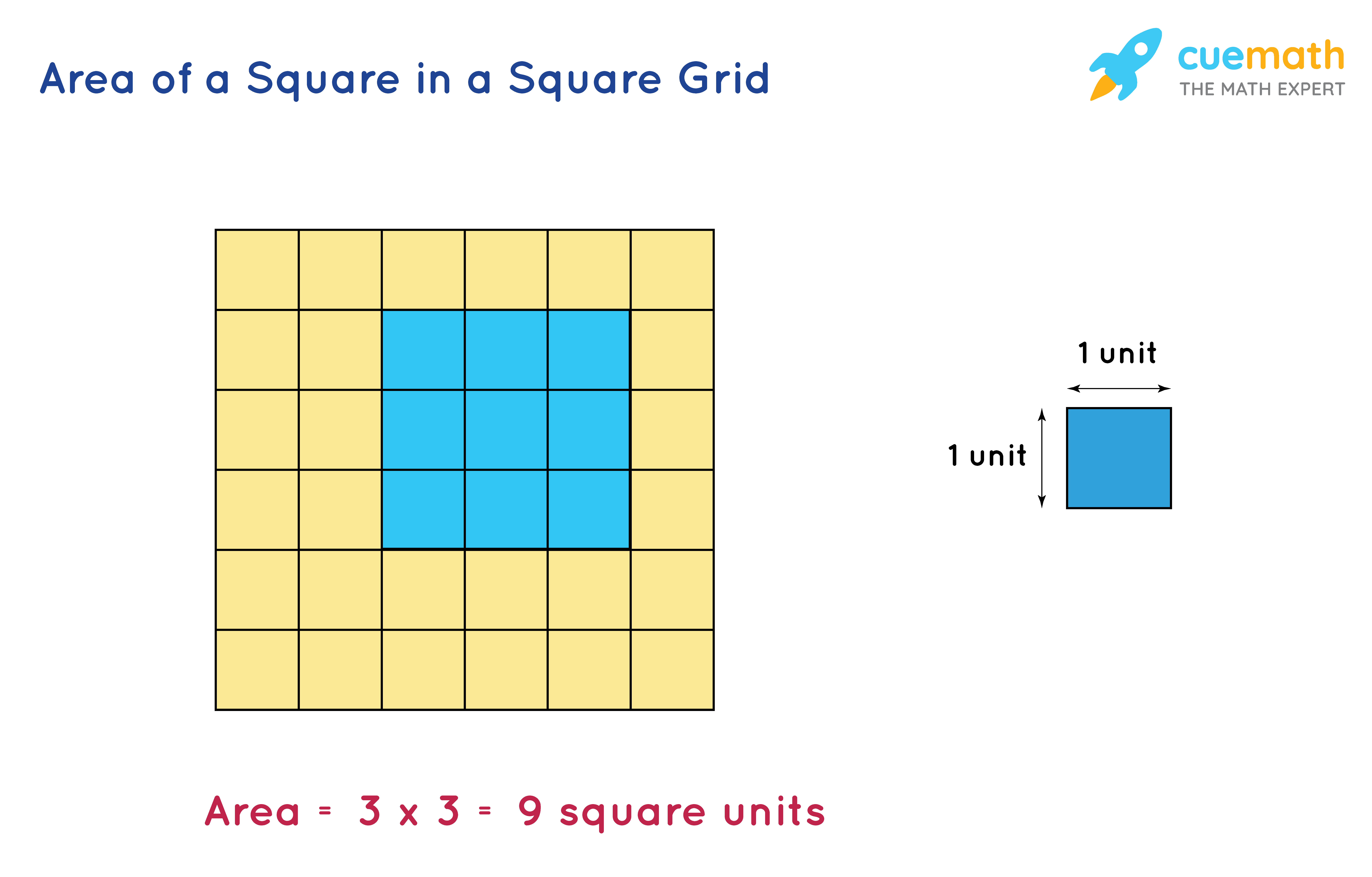Topic perimeter calculator with points: The "Perimeter Calculator with Points" is a powerful tool designed to simplify geometry calculations by providing accurate perimeter measurements for various shapes using their vertices coordinates. Ideal for students, engineers, and DIY enthusiasts, this calculator streamlines the process, making it quick and easy to obtain precise results for any polygon or geometric figure.
Table of Content
Perimeter Calculator with Points
This perimeter calculator allows you to determine the perimeter of various shapes given the coordinates of their vertices.
Introduction
The perimeter of a shape is the total distance around the edges of the shape. By using the coordinates of the vertices, we can calculate the perimeter by finding the sum of the distances between consecutive points.
How to Calculate the Perimeter
To calculate the perimeter of a polygon using the coordinates of its vertices, follow these steps:
- Determine the coordinates of each vertex of the polygon.
- Calculate the distance between each pair of consecutive vertices using the distance formula:
- Add the distances of all the sides to get the perimeter.
\[
\text{Distance} = \sqrt{(x_2 - x_1)^2 + (y_2 - y_1)^2}
\]
Example Calculation
Consider a polygon with vertices at the following coordinates:
- A(2, 3)
- B(5, 7)
- C(8, 7)
- D(5, 4)
The distances between the vertices are calculated as follows:
- AB: \(\sqrt{(5 - 2)^2 + (7 - 3)^2} = \sqrt{3^2 + 4^2} = \sqrt{25} = 5\)
- BC: \(\sqrt{(8 - 5)^2 + (7 - 7)^2} = \sqrt{3^2 + 0^2} = 3\)
- CD: \(\sqrt{(8 - 5)^2 + (7 - 4)^2} = \sqrt{3^2 + 3^2} = \sqrt{18} \approx 4.24\)
- DA: \(\sqrt{(5 - 2)^2 + (4 - 3)^2} = \sqrt{3^2 + 1^2} = \sqrt{10} \approx 3.16\)
The perimeter is the sum of these distances:
\[
\text{Perimeter} = 5 + 3 + 4.24 + 3.16 = 15.4 \text{ units}
\]
Applications
This method can be used for calculating the perimeter of any polygon, whether it is a triangle, rectangle, or more complex shapes.
Additional Features
Some online calculators provide additional features such as calculating the area of the polygon, handling different units, and providing step-by-step solutions.
Conclusion
Calculating the perimeter using coordinates is a straightforward process that involves using the distance formula and summing the lengths of the sides. This method is useful in various applications, including geometry, land surveying, and more.

READ MORE:
What is Perimeter?
The perimeter of a shape is the total distance around its outer edges. In simpler terms, it is the length of the boundary that encloses a two-dimensional figure. The concept of perimeter applies to various geometric shapes, from polygons like squares and rectangles to circles and ellipses. Calculating the perimeter is a fundamental aspect of geometry and has practical applications in fields such as construction, architecture, and land surveying.
To understand perimeter calculation better, let's break it down by shape:
- Square: The perimeter is calculated by multiplying the length of one side by four.
Formula: \( P = 4s \) - Rectangle: The perimeter is the sum of twice the length and twice the width.
Formula: \( P = 2(l + w) \) - Triangle: The perimeter is the sum of the lengths of all three sides.
Formula: \( P = a + b + c \) - Circle: Also known as the circumference, it is calculated using the radius.
Formula: \( C = 2\pi r \)
For polygons with more than four sides, the perimeter is the sum of the lengths of all sides. When dealing with shapes defined by coordinates, the distance formula is used to find the length of each side before summing them up to get the perimeter.
| Shape | Formula |
| Square | \( P = 4s \) |
| Rectangle | \( P = 2(l + w) \) |
| Triangle | \( P = a + b + c \) |
| Circle | \( C = 2\pi r \) |
Understanding these formulas is essential for accurately determining the perimeter of different shapes, which is a valuable skill in various practical and academic fields.
Perimeter Calculation Methods
Calculating the perimeter of a geometric shape depends on the type of shape and the given parameters. Here, we will explore various methods to calculate the perimeter for different shapes.
- Square: The perimeter of a square can be calculated by multiplying the length of one side by 4.
- Formula: \( P = 4a \)
- Rectangle: To find the perimeter of a rectangle, add the lengths of all four sides or use the formula \( P = 2(l + w) \).
- Formula: \( P = 2l + 2w \)
- Triangle: The perimeter of a triangle is the sum of the lengths of its three sides. For an equilateral triangle, multiply one side by 3.
- Formula: \( P = a + b + c \)
- Equilateral Triangle: \( P = 3a \)
- Circle: The perimeter of a circle, known as the circumference, is calculated using the radius or diameter.
- Formula: \( C = 2\pi r \) or \( C = \pi d \)
- Polygon: For a regular polygon, multiply the number of sides by the length of one side.
- Formula: \( P = n \cdot a \)
- Quadrilateral with Coordinates: When the coordinates of the vertices are known, use the distance formula to calculate the length of each side, then sum them.
- Distance Formula: \( D = \sqrt{(x_2 - x_1)^2 + (y_2 - y_1)^2} \)
- Example: For vertices \((x_1, y_1), (x_2, y_2), (x_3, y_3), (x_4, y_4)\), calculate each side and sum them for the perimeter.
Using Coordinates of Vertices
Calculating the perimeter of a polygon using the coordinates of its vertices involves determining the distances between consecutive points and then summing these distances. This method is particularly useful for irregular shapes. Here's a detailed step-by-step approach:
-
Identify the Coordinates: Begin by listing the coordinates of each vertex of the polygon in the order they are connected. For example, for a triangle with vertices at \(A(x_1, y_1)\), \(B(x_2, y_2)\), and \(C(x_3, y_3)\).
-
Calculate the Distances Between Vertices: Use the distance formula to calculate the length of each side of the polygon. The distance formula between two points \((x_1, y_1)\) and \((x_2, y_2)\) is given by:
\[
d = \sqrt{(x_2 - x_1)^2 + (y_2 - y_1)^2}
\]Apply this formula to each pair of consecutive vertices:
- For side \(AB\): \[ AB = \sqrt{(x_2 - x_1)^2 + (y_2 - y_1)^2} \]
- For side \(BC\): \[ BC = \sqrt{(x_3 - x_2)^2 + (y_3 - y_2)^2} \]
- For side \(CA\): \[ CA = \sqrt{(x_3 - x_1)^2 + (y_3 - y_1)^2} \]
-
Sum the Distances: Add the lengths of all sides to find the perimeter of the polygon. For a triangle, the perimeter \(P\) is given by:
\[
P = AB + BC + CA
\] -
Verify the Results: Use a perimeter calculator or manually verify the calculations for accuracy, especially if the shape has more than three sides.
This method ensures that you can accurately determine the perimeter of any polygon by simply using the coordinates of its vertices.
Using Geometric Formulas
Calculating the perimeter of a shape can be efficiently done using geometric formulas tailored to specific shapes. Here’s a detailed breakdown of how to calculate the perimeter for various geometric figures:
Rectangle
For a rectangle with length \( l \) and width \( w \), the perimeter \( P \) is calculated as:
\[
P = 2(l + w)
\]
Square
A square, being a special case of a rectangle where all sides are equal, has its perimeter \( P \) calculated as:
\[
P = 4s
\]
where \( s \) is the length of a side.
Triangle
The perimeter of a triangle with sides \( a \), \( b \), and \( c \) is given by:
\[
P = a + b + c
\]
Circle
For a circle, the perimeter, commonly referred to as the circumference \( C \), is found using the radius \( r \):
\[
C = 2\pi r
\]
Regular Polygon
A regular polygon with \( n \) sides, each of length \( s \), has its perimeter \( P \) calculated by:
\[
P = n \cdot s
\]
Ellipse
For an ellipse with semi-major axis \( a \) and semi-minor axis \( b \), an approximate formula for the perimeter \( P \) is:
\[
P \approx \pi \left[ 3(a + b) - \sqrt{(3a + b)(a + 3b)} \right]
\]
Irregular Shapes
When dealing with irregular shapes, the perimeter can be calculated by summing the lengths of all the individual sides. For shapes defined by coordinates, the distance formula is used to determine the length of each side:
\[
d = \sqrt{(x_2 - x_1)^2 + (y_2 - y_1)^2}
\]
Summing these distances will yield the perimeter of the shape.
These formulas and methods provide a systematic way to calculate the perimeter for a variety of geometric figures, ensuring accurate results for different shapes and dimensions.
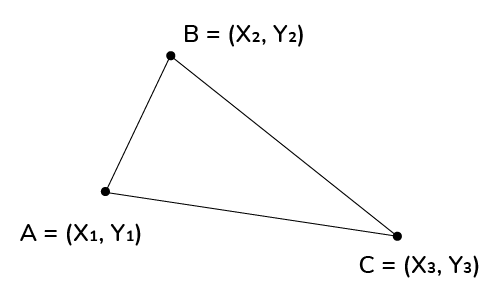
Rectangle
Calculating the perimeter of a rectangle is a fundamental concept in geometry. To find the perimeter, you need to know the length and width of the rectangle. The formula for the perimeter of a rectangle is:
\[
P = 2 \times (l + w)
\]
where \( P \) is the perimeter, \( l \) is the length, and \( w \) is the width.
Let's break down the steps for calculating the perimeter:
- Measure the length (\( l \)) and the width (\( w \)) of the rectangle.
- Plug the values into the perimeter formula: \( P = 2 \times (l + w) \).
- Perform the arithmetic operations: first add the length and width, then multiply the result by 2.
- The result is the perimeter of the rectangle.
For example, if the length of the rectangle is 5 units and the width is 3 units, the calculation would be:
\[
P = 2 \times (5 + 3) = 2 \times 8 = 16 \text{ units}
\]
This method applies to any rectangle, regardless of its size. Accurate measurements of length and width are crucial for precise perimeter calculation.
| Length (units) | Width (units) | Perimeter (units) |
|---|---|---|
| 5 | 3 | 16 |
| 7 | 4 | 22 |
| 10 | 6 | 32 |
Understanding how to calculate the perimeter of a rectangle is essential for various practical applications, such as determining the amount of fencing needed for a yard or the border length of a garden plot.
Triangle
Calculating the perimeter of a triangle involves summing the lengths of all its sides. If the coordinates of the vertices are known, the distance formula is used to find the lengths of the sides.
Steps to Calculate the Perimeter Using Coordinates
- Identify the coordinates of the vertices:
Let the vertices of the triangle be A(x1, y1), B(x2, y2), and C(x3, y3).
- Apply the distance formula:
The distance between two points (x1, y1) and (x2, y2) is calculated as:
\[
d = \sqrt{(x_2 - x_1)^2 + (y_2 - y_1)^2}
\]- Calculate the length of side a (BC):
\[
a = \sqrt{(x_3 - x_2)^2 + (y_3 - y_2)^2}
\] - Calculate the length of side b (AC):
\[
b = \sqrt{(x_3 - x_1)^2 + (y_3 - y_1)^2}
\] - Calculate the length of side c (AB):
\[
c = \sqrt{(x_2 - x_1)^2 + (y_2 - y_1)^2}
\]
- Calculate the length of side a (BC):
- Sum the lengths of all sides:
The perimeter P of the triangle is given by:
\[
P = a + b + c
\]
Example Calculation
Given the vertices A(1, 2), B(4, 6), and C(6, 1), let's calculate the perimeter step-by-step:
- Calculate the length of side a (BC):
\[
a = \sqrt{(6 - 4)^2 + (1 - 6)^2} = \sqrt{4 + 25} = \sqrt{29}
\] - Calculate the length of side b (AC):
\[
b = \sqrt{(6 - 1)^2 + (1 - 2)^2} = \sqrt{25 + 1} = \sqrt{26}
\] - Calculate the length of side c (AB):
\[
c = \sqrt{(4 - 1)^2 + (6 - 2)^2} = \sqrt{9 + 16} = \sqrt{25} = 5
\] - Sum the lengths to find the perimeter:
\[
P = \sqrt{29} + \sqrt{26} + 5 \approx 5.39 + 5.10 + 5 = 15.49
\]
This detailed step-by-step process ensures accurate calculation of the triangle's perimeter using the coordinates of its vertices. Using online tools like the one available at can also simplify this process, providing quick and reliable results.
Circle
The perimeter of a circle, also known as the circumference, is the total distance around the circle. It is a fundamental concept in geometry and can be calculated using various methods, including the radius or diameter of the circle.
Formula for the Circumference of a Circle
The formula to calculate the circumference of a circle is:
\[
P = 2\pi r
\]
where \( P \) is the perimeter (circumference), \( \pi \) (pi) is approximately 3.14159, and \( r \) is the radius of the circle.
Steps to Calculate the Circumference
- Measure the radius (r) of the circle. If you have the diameter (d), divide it by 2 to get the radius, as \( r = \frac{d}{2} \).
- Multiply the radius by 2 to get the diameter if only the radius is known.
- Multiply the diameter by \( \pi \) (pi), or use the formula \( 2\pi r \).
Example Calculation
Let's calculate the circumference of a circle with a radius of 5 units.
Using the formula \( P = 2\pi r \):
\[
P = 2 \times \pi \times 5 \approx 2 \times 3.14159 \times 5 \approx 31.4159 \, \text{units}
\]
Using Online Perimeter Calculators
Online calculators can simplify the process of finding the circumference of a circle. These tools typically require you to enter the radius or diameter, and they automatically apply the formula to give you the result. Some recommended online calculators include:
- Omni Calculator
- Free Online Calculator
- Calculator Pro
- Desmos
- FreeCalculator.net
Additional Resources
For more detailed explanations and tools to calculate the perimeter of other shapes, you can refer to online resources and calculators specifically designed for geometric calculations. These tools often provide step-by-step solutions and visual aids to enhance understanding.
Polygon
To calculate the perimeter of a polygon using the coordinates of its vertices, follow these detailed steps:
- Identify the coordinates of each vertex of the polygon. Each vertex is represented by a set of coordinates \((x, y)\) in a two-dimensional Cartesian plane.
- Compute the distance between consecutive vertices using the distance formula. For two points \((x_1, y_1)\) and \((x_2, y_2)\), the distance is given by:
\[
\text{distance} = \sqrt{(x_2 - x_1)^2 + (y_2 - y_1)^2}
\] - Sum up the distances of all the sides to find the perimeter of the polygon:
where \(n\) is the number of vertices, and \((x_{n+1}, y_{n+1}) = (x_1, y_1)\) to close the polygon.
\[
P = \sum_{i=1}^{n} \sqrt{(x_{i+1} - x_i)^2 + (y_{i+1} - y_i)^2}
\]
For example, consider a polygon with four vertices: \(A(2, 4)\), \(B(5, 7)\), \(C(8, 4)\), and \(D(5, 1)\). To calculate its perimeter:
- Distance AB: \[ \sqrt{(5 - 2)^2 + (7 - 4)^2} = \sqrt{3^2 + 3^2} = \sqrt{18} \approx 4.2426 \]
- Distance BC: \[ \sqrt{(8 - 5)^2 + (4 - 7)^2} = \sqrt{3^2 + (-3)^2} = \sqrt{18} \approx 4.2426 \]
- Distance CD: \[ \sqrt{(5 - 8)^2 + (1 - 4)^2} = \sqrt{(-3)^2 + (-3)^2} = \sqrt{18} \approx 4.2426 \]
- Distance DA: \[ \sqrt{(2 - 5)^2 + (4 - 1)^2} = \sqrt{(-3)^2 + 3^2} = \sqrt{18} \approx 4.2426 \]
Therefore, the perimeter of the given polygon is:
\[
4.2426 + 4.2426 + 4.2426 + 4.2426 = 16.9704 \text{ units}
\]
By following these steps, you can accurately calculate the perimeter of any polygon using the coordinates of its vertices.

Ellipse
Calculating the perimeter of an ellipse is more complex than for other shapes due to its curved nature. The perimeter, also known as the circumference, cannot be expressed exactly with elementary functions, so we use an approximation formula.
The approximate formula for the perimeter \( P \) of an ellipse with semi-major axis \( a \) and semi-minor axis \( b \) is given by:
\[ P \approx \pi \left[ 3(a + b) - \sqrt{(3a + b)(a + 3b)} \right] \]
Here's a step-by-step method to calculate the perimeter:
- Identify the lengths of the semi-major axis (\( a \)) and the semi-minor axis (\( b \)).
- Substitute these values into the approximation formula.
- Calculate the value inside the square root.
- Perform the arithmetic operations as per the formula.
Let's consider an example with \( a = 5 \) units and \( b = 3 \) units:
- Calculate \( a + b \): \( 5 + 3 = 8 \).
- Calculate \( 3a + b \): \( 3(5) + 3 = 15 + 3 = 18 \).
- Calculate \( a + 3b \): \( 5 + 3(3) = 5 + 9 = 14 \).
- Calculate the square root part: \( \sqrt{18 \cdot 14} = \sqrt{252} \approx 15.8745 \).
- Calculate the perimeter: \( \pi [ 3(8) - 15.8745 ] = \pi [ 24 - 15.8745 ] \approx \pi \cdot 8.1255 \approx 25.53 \) units.
Therefore, the approximate perimeter of the ellipse is 25.53 units.
For more accurate results, you may use online calculators designed specifically for calculating the perimeter of an ellipse, such as the ones available on FreeCalculator.net or InchCalculator.com.
Parallelogram
A parallelogram is a four-sided shape where opposite sides are parallel and equal in length. The perimeter of a parallelogram is calculated by summing the lengths of its four sides, but since the opposite sides are equal, we can use a simplified formula:
Formula: \( P = 2(a + b) \), where a and b are the lengths of the pairs of parallel sides.
Here's a step-by-step method to find the perimeter of a parallelogram using its vertices:
- Identify the coordinates of the vertices of the parallelogram. Let's denote them as A(x1, y1), B(x2, y2), C(x3, y3), and D(x4, y4).
- Calculate the distance between consecutive vertices using the distance formula:
\( d = \sqrt{(x_2 - x_1)^2 + (y_2 - y_1)^2} \). - Find the lengths of two adjacent sides (e.g., AB and BC).
- \( AB = \sqrt{(x_2 - x_1)^2 + (y_2 - y_1)^2} \)
- \( BC = \sqrt{(x_3 - x_2)^2 + (y_3 - y_2)^2} \)
- Since AB and CD, as well as BC and DA, are opposite and equal, you only need to calculate the distances for AB and BC.
- Substitute the lengths of AB and BC into the formula to find the perimeter:
\( P = 2(AB + BC) \).
For example, given a parallelogram with vertices at A(1, 2), B(5, 2), C(6, 4), and D(2, 4):
- Calculate AB: \( AB = \sqrt{(5 - 1)^2 + (2 - 2)^2} = 4 \).
- Calculate BC: \( BC = \sqrt{(6 - 5)^2 + (4 - 2)^2} = \sqrt{1 + 4} = \sqrt{5} \).
- The perimeter is then: \( P = 2(4 + \sqrt{5}) \).
Therefore, the perimeter of the given parallelogram is \( P = 8 + 2\sqrt{5} \).
For further convenience, you can also use online tools to calculate the perimeter of a parallelogram by entering the coordinates of its vertices. These tools automatically apply the distance formula and sum the lengths of the sides for you.
Trapezoid
A trapezoid (or trapezium in British English) is a four-sided figure with at least one pair of parallel sides, known as the bases. The non-parallel sides are called the legs. The perimeter of a trapezoid is the total distance around the shape, which can be calculated by adding the lengths of all its sides.
Formula: \( P = a + b + c + d \), where a and b are the lengths of the parallel sides (bases), and c and d are the lengths of the non-parallel sides (legs).
To calculate the perimeter of a trapezoid using its vertices, follow these steps:
- Identify the coordinates of the vertices of the trapezoid. Let’s denote them as A(x1, y1), B(x2, y2), C(x3, y3), and D(x4, y4).
- Calculate the distance between each pair of consecutive vertices using the distance formula:
\( d = \sqrt{(x_2 - x_1)^2 + (y_2 - y_1)^2} \). - Determine the lengths of the sides AB, BC, CD, and DA using the following calculations:
- \( AB = \sqrt{(x_2 - x_1)^2 + (y_2 - y_1)^2} \)
- \( BC = \sqrt{(x_3 - x_2)^2 + (y_3 - y_2)^2} \)
- \( CD = \sqrt{(x_4 - x_3)^2 + (y_4 - y_3)^2} \)
- \( DA = \sqrt{(x_1 - x_4)^2 + (y_1 - y_4)^2} \)
- Add the lengths of all four sides to find the perimeter:
\( P = AB + BC + CD + DA \).
For example, if we have a trapezoid with vertices at A(1, 1), B(5, 1), C(4, 3), and D(2, 3):
- Calculate AB: \( AB = \sqrt{(5 - 1)^2 + (1 - 1)^2} = 4 \)
- Calculate BC: \( BC = \sqrt{(4 - 5)^2 + (3 - 1)^2} = \sqrt{1 + 4} = \sqrt{5} \)
- Calculate CD: \( CD = \sqrt{(4 - 2)^2 + (3 - 3)^2} = 2 \)
- Calculate DA: \( DA = \sqrt{(2 - 1)^2 + (3 - 1)^2} = \sqrt{1 + 4} = \sqrt{5} \)
- The perimeter is then: \( P = 4 + \sqrt{5} + 2 + \sqrt{5} = 6 + 2\sqrt{5} \)
Therefore, the perimeter of the given trapezoid is \( P = 6 + 2\sqrt{5} \).
Online perimeter calculators can also be useful for quickly determining the perimeter of a trapezoid by inputting the coordinates of its vertices, making it easy to perform these calculations without manual computation.
Online Perimeter Calculators
Online perimeter calculators are versatile tools that allow users to quickly and accurately compute the perimeter of various shapes, especially polygons, by entering the coordinates of their vertices. These calculators are particularly useful for students, engineers, and anyone dealing with geometric calculations. Here’s how to use them effectively:
Steps to Use an Online Perimeter Calculator:
- Open a reliable online perimeter calculator. Some popular options include Omni Calculator, Desmos, and Calculator Soup.
- Select the type of shape for which you want to calculate the perimeter. Options often include polygons, circles, ellipses, and more.
- For polygons, enter the coordinates of each vertex. The calculator will use these points to determine the distances between consecutive vertices.
- Click on the 'Calculate' button. The calculator will apply the distance formula to each pair of consecutive points and sum these distances to give you the perimeter.
Example: Calculating the Perimeter of a Polygon Using Coordinates
- Open a perimeter calculator and choose the 'Polygon' option.
- Enter the coordinates of the vertices, such as A(1, 1), B(4, 1), C(4, 5), and D(1, 5).
- Upon clicking 'Calculate', the tool computes the distances as follows:
- \( AB = \sqrt{(4 - 1)^2 + (1 - 1)^2} = 3 \)
- \( BC = \sqrt{(4 - 4)^2 + (5 - 1)^2} = 4 \)
- \( CD = \sqrt{(4 - 1)^2 + (5 - 5)^2} = 3 \)
- \( DA = \sqrt{(1 - 1)^2 + (5 - 1)^2} = 4 \)
- The perimeter is then calculated as the sum of these distances:
\( P = 3 + 4 + 3 + 4 = 14 \).
Features to Look for in an Online Perimeter Calculator:
- User-Friendly Interface: Easy to navigate and enter data.
- Support for Various Shapes: Ability to calculate perimeters for different geometric shapes including polygons, circles, and more.
- Visualization: Option to plot the shape based on entered points to visually verify the input.
- Detailed Output: Provides step-by-step calculations and the final perimeter value.
Popular Online Perimeter Calculators:
- Omni Calculator: Offers a wide range of calculators including those for geometric shapes. It provides detailed steps and results.
- Desmos: Known for its graphing capabilities, Desmos also offers tools to calculate the perimeter of plotted shapes.
- Calculator Soup: A comprehensive tool that covers various mathematical calculations, including perimeter computations.
- Math Warehouse: Provides visual aids and interactive calculators for geometry problems.
- GeoGebra: An interactive geometry, algebra, and calculus application that can also calculate the perimeter of shapes.
These tools can save time and reduce errors in manual calculations, making them invaluable for both educational and professional purposes. Whether you're dealing with simple shapes or complex polygons, online perimeter calculators provide an efficient solution.

Examples of Perimeter Calculations
Calculating the perimeter of shapes using their points or vertices can be straightforward with the right approach. Here are detailed examples of perimeter calculations for different geometric shapes:
Rectangle
Given a rectangle with length \( l \) and width \( w \):
- Coordinates: A(0, 0), B(\( l \), 0), C(\( l \), \( w \)), D(0, \( w \))
- Calculate the lengths of each side:
- AB: \( \sqrt{(l - 0)^2 + (0 - 0)^2} = l \)
- BC: \( \sqrt{(l - l)^2 + (w - 0)^2} = w \)
- CD: \( \sqrt{(0 - l)^2 + (w - w)^2} = l \)
- DA: \( \sqrt{(0 - 0)^2 + (w - 0)^2} = w \)
- Sum these lengths to find the perimeter:
\( P = l + w + l + w = 2(l + w) \)
Example: For a rectangle with length 4 units and width 6 units:
\( P = 2(4 + 6) = 20 \) units
Triangle
Given a triangle with sides \( a \), \( b \), and \( c \):
- Coordinates: A(0, 0), B(\( x_1 \), \( y_1 \)), C(\( x_2 \), \( y_2 \))
- Calculate the lengths of each side using the distance formula:
- AB: \( \sqrt{(x_1 - 0)^2 + (y_1 - 0)^2} = \sqrt{x_1^2 + y_1^2} \)
- BC: \( \sqrt{(x_2 - x_1)^2 + (y_2 - y_1)^2} \)
- CA: \( \sqrt{(0 - x_2)^2 + (0 - y_2)^2} = \sqrt{x_2^2 + y_2^2} \)
- Sum these lengths to find the perimeter:
\( P = AB + BC + CA \)
Example: For a triangle with vertices at A(0, 0), B(3, 4), and C(6, 0):
- AB: \( \sqrt{3^2 + 4^2} = 5 \)
- BC: \( \sqrt{(6 - 3)^2 + (0 - 4)^2} = \sqrt{9 + 16} = 5 \)
- CA: \( \sqrt{6^2 + 0^2} = 6 \)
The perimeter is \( P = 5 + 5 + 6 = 16 \) units
Polygon
For a polygon with \( n \) vertices, the perimeter is the sum of the distances between consecutive vertices. Let's calculate the perimeter for a polygon with vertices A(\( x_1 \), \( y_1 \)), B(\( x_2 \), \( y_2 \)), ..., N(\( x_n \), \( y_n \)):
- Use the distance formula to calculate the length of each side:
- AB: \( \sqrt{(x_2 - x_1)^2 + (y_2 - y_1)^2} \)
- BC: \( \sqrt{(x_3 - x_2)^2 + (y_3 - y_2)^2} \)
- ... continue for each consecutive pair of vertices ...
- NA: \( \sqrt{(x_n - x_1)^2 + (y_n - y_1)^2} \)
- Add all these distances to find the perimeter:
\( P = \sum_{i=1}^{n-1} \sqrt{(x_{i+1} - x_i)^2 + (y_{i+1} - y_i)^2} + \sqrt{(x_n - x_1)^2 + (y_n - y_1)^2} \)
Example: For a polygon with vertices at A(1, 2), B(4, 5), C(7, 3), and D(3, 1):
- AB: \( \sqrt{(4 - 1)^2 + (5 - 2)^2} = \sqrt{9 + 9} = \sqrt{18} = 4.24 \) (approx)
- BC: \( \sqrt{(7 - 4)^2 + (3 - 5)^2} = \sqrt{9 + 4} = \sqrt{13} = 3.61 \) (approx)
- CD: \( \sqrt{(3 - 7)^2 + (1 - 3)^2} = \sqrt{16 + 4} = \sqrt{20} = 4.47 \) (approx)
- DA: \( \sqrt{(1 - 3)^2 + (2 - 1)^2} = \sqrt{4 + 1} = \sqrt{5} = 2.24 \) (approx)
The perimeter is \( P = 4.24 + 3.61 + 4.47 + 2.24 = 14.56 \) units (approx)
Using these methods, you can accurately calculate the perimeter of various shapes by applying the distance formula between their points or vertices. For more complex shapes, online calculators can simplify these calculations by automating the steps and providing quick results.
Tìm Chu Vi
READ MORE:
Cách xác định chu vi của tứ giác bằng công thức khoảng cách của bốn điểm



